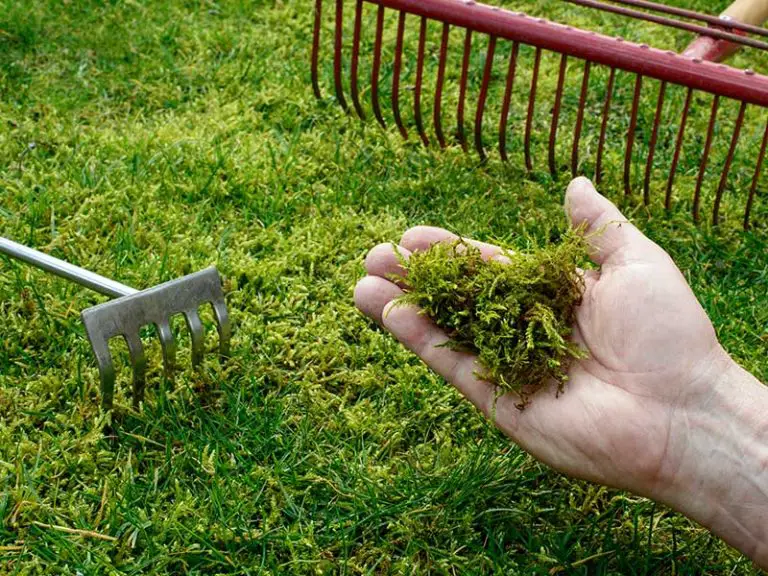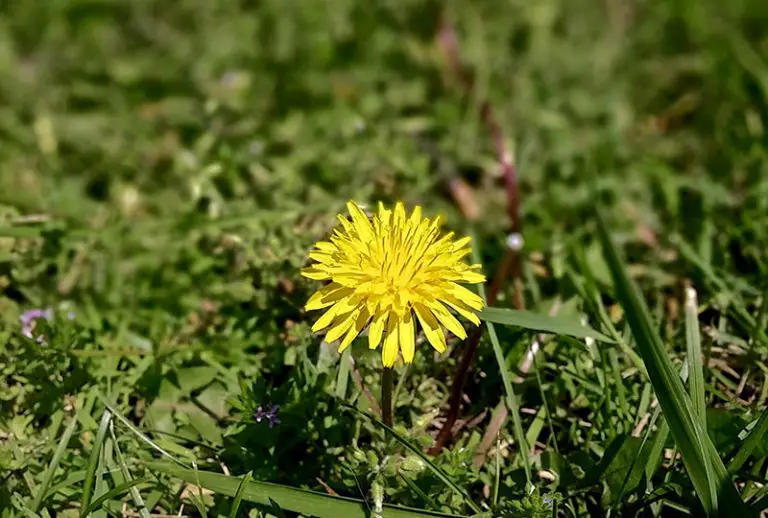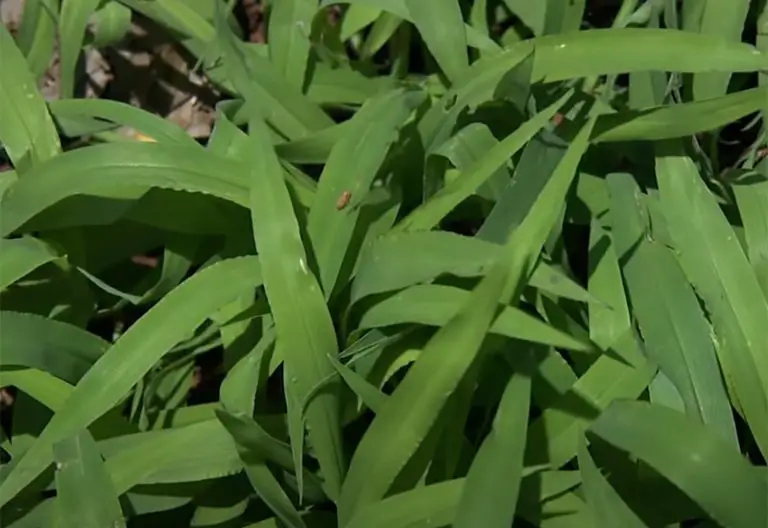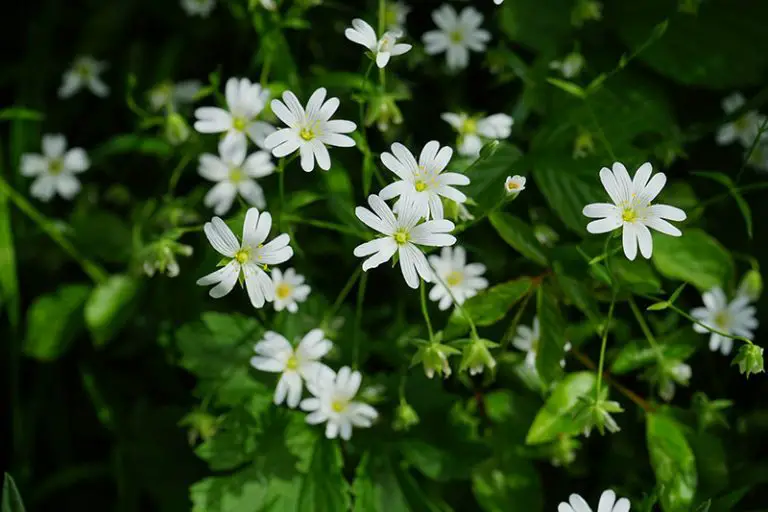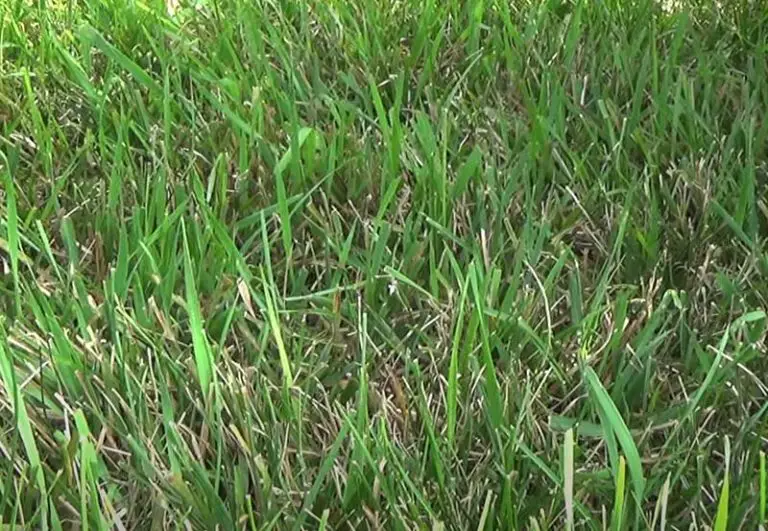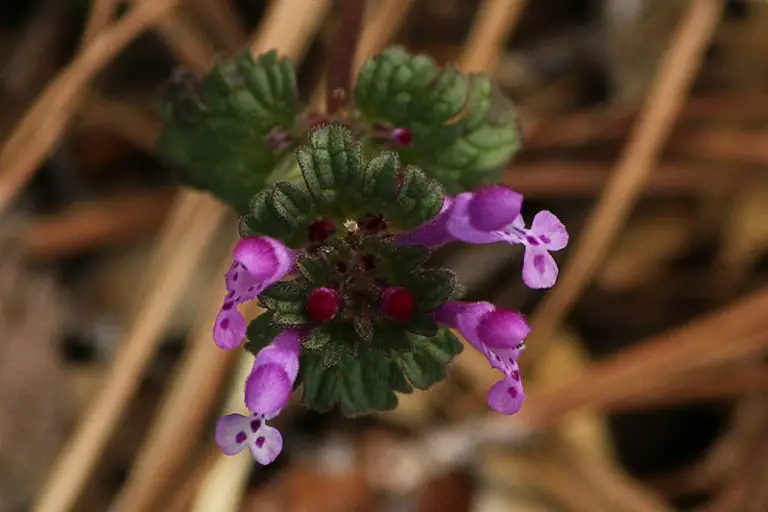Are Lawn Mushrooms Poisonous?
Have you ever wondered if those beautiful little mushrooms popping up on your lawn are poisonous? I know I have! So I decided to research lawn mushrooms to find out if they are indeed poisonous or not. I found a ton of information on lawn mushrooms and decided to share some of my findings.
Approximately 99% of mushrooms are not poisonous. The remaining 1%, if ingested, can cause mild symptoms such as diarrhea and vomiting, and in rare cases, liver failure and even death. Therefore to be safe, you must consider all lawn mushrooms poisonous until accurately identified by a professional.
Most mushrooms are not poisonous, but a few species are, and these might be living quite happily on your lawn right now. Let’s go into more detail about some of the main issues you would have to deal with if your lawn mushrooms are poisonous and what you can do to prevent these issues from occurring.
Are The Mushrooms Growing On Your Lawn Poisonous?
Most mushrooms found, whether growing in your lawn or out in the wild, are not poisonous. If you do have mushrooms growing, it is often a reflection of the healthy nature of your lawn in general.
Mushrooms like to grow in damp soil, often popping up after heavy rainfall; they also thrive in humid conditions and dark shady areas. They are also beneficial to your lawn as they aid in decomposing dead organic garden material such as bark, dead leaves, mulch, etc. Nutrients are added back into your soil during decomposition, feeding your lawn and surrounding plant life.
Unfortunately, hiding amongst the benign helpful mushrooms, you can sometimes get a mushroom that, if ingested, can cause mild to serious harm to a person or an animal. Some of these mushrooms have identifying characteristics, but many of them will masquerade as their non-poisonous counterparts.
They make it very hard for an ordinary person to tell which ones are poisonous and which are not. This identification is best left up to professionals or seasoned mushroom hunters. If ingested, a poisonous mushroom can cause mild to severe issues.
The most common symptoms can include vomiting, nausea, diarrhea, which can turn bloody, hallucinations, and abdominal pain. Worst case symptoms include liver failure, kidney failure, internal bleeding, and death. These symptoms will typically start after 4-6 hours after ingestion depending on the person and type of mushroom. If you had to ingest an Amanita mushroom, you can expect delayed symptoms, which would start to show after 6-24 hours.
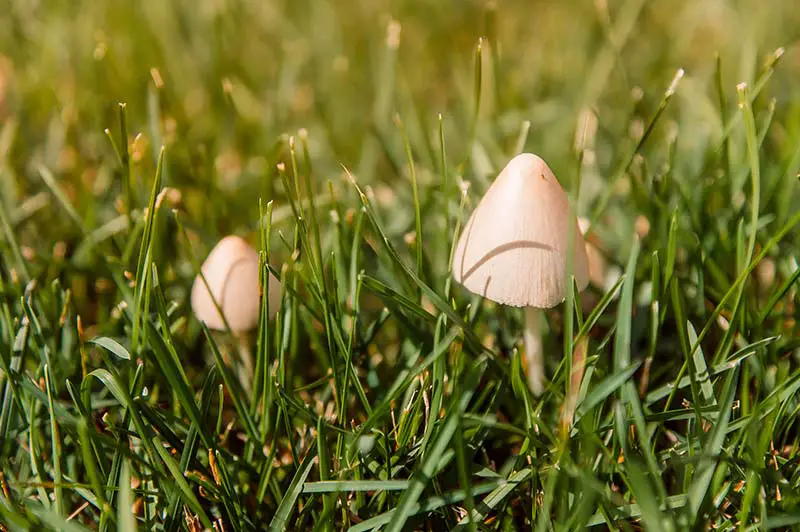
Are Lawn Mushrooms Poisonous For Children?
If you have a small child running around at home, you should be wary of all mushrooms growing on your lawn. Children often can’t help themselves and will pop a mushroom into their mouths before you can stop them. Because they are so small, their symptoms might start to manifest quicker than if an adult had taken a bite out of the mushroom.
If a child does ingest a mushroom, whether it is a small bite or even just popping it into their mouths, the best course of action would be to get them to a doctor or into the ER as quickly as possible. Before leaving the house, make sure you take a picture or take a sample of the mushroom in question with you. This way, the doctors and nurses can identify whether or not the mushroom in question is poisonous in order to use the best treatment method.
Most often, treatment for poisonous mushroom consumption includes activated charcoal, IV fluids, and induced vomiting. Suppose one of the more toxic varieties is consumed, such as a mushroom from the Amanita family, extra precautions could be taken in the form of gastric lavage, duodenal aspiration, and activated charcoal, given repeatedly.
Are Lawn Mushrooms Poisonous For Dogs?
Like small children, dogs sometimes can’t help themselves when they see a nice smelling mushroom poking up out of the grass. Unfortunately, often you won’t see them taking a bite out of this new food source. Your only clue will come in the form of your dog starting to show symptoms.
If you do happen to see your dog take a bite out of one of your lawn mushrooms, your best course of action would be to get them to the vet as soon as possible. Don’t forget to take a picture of the mushroom or grab a sample before you head out to help your vet identify which treatment method they should use.
If you didn’t manage to catch your dog in mushroom chomping action and you start to notice that they are vomiting, have diarrhea, or abdominal discomfort, get them to the vet. Other rarer symptoms include hallucination, agitation, seizures, and excessive salivation. Also, look out for your dogs’ gums or eyes turning yellow; this is a sign of liver failure.
Once at the vet, treatment could include any of the following alone or in tandem: IV fluids or consumption of a vomiting-inducing agent such as hydrogen peroxide.
Minimizing The Risk Of Ingesting Poisonous Lawn Mushrooms
In most cases, especially if you don’t have a small child or dog to worry about, you can leave the mushrooms growing in your lawn as they are not harmful unless ingested. Even if you touch a poisonous one by accident, the chances of you having any adverse side effects are minimal if nonexistent. But if you find these mushrooms aesthetically displeasing, or you do have to worry about children or pets eating one, there are a few methods you can employ to reduce the risk.
Before we look into preventative measures, it would be good to explain that it is almost impossible to remove mushrooms from your lawn or garden permanently. The mushrooms you see poking out of your grass are the fruiting bodies of the mycelia growing in your soil, and therefore it would be challenging, if not impossible, to get rid of all the mycelia in your soil.
Here are some preventative measures you can employ to reduce your lawn mushroom population and keep your family safe:
- You could manually remove the mushrooms by hand or rake them up when they pop out before you let your child or dog onto the lawn.
- Removal of dead organic matter from your lawn, thus reducing the food supply of the mycelia.
- Thinning out the trees hanging over your lawn, reducing shade
- Making sure you do not overwater your grass by knowing how often to water your lawn.
- Aerating your lawn can also be beneficial in reducing the mycelia in your soil.
- Dethatching your lawn with a rake
- Fertilizing your lawn with a fast-release high-nitrogen fertilizer
We have provided much more detailed guidance on how to reduce the number of mushrooms on a lawn in our article How To Get Rid of Mushrooms in Your Lawn.
Conclusion
Most of the mushrooms you will find on your lawn will not be poisonous. Only a small percentage of mushrooms are, in fact, poisonous. The difficulty comes in with the identifying process. It is challenging to identify which mushrooms are toxic and which ones are not. It takes a professional to identify a mushroom correctly, as some poisonous mushrooms like to masquerade as their more benign counterparts.
When deciding what to do about the mushrooms growing on your lawn, the best option would be to remove them if you have small children or pets who are allowed to run around on the grass. If you do not have children or animals to worry about, you could opt to leave the mushrooms where they are as they do not pose an immediate threat to anyone and are, in fact, often beneficial to the health of your lawn.

